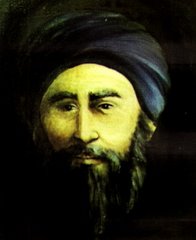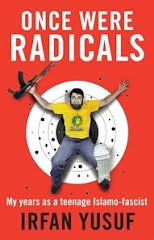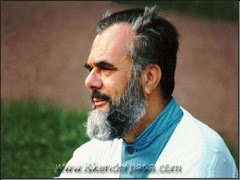Peter Manning has penned an excellent book entitled Us And Them which discusses his research into systematic bias against Islam and Muslim societies in general and Palestinians in particular in Australian media.
Much of the book is devoted to Manning’s own travels through the Middle East and his discovery that Muslims are not just a bunch of 5-headed monsters who worship the Moon-god and drink a mixture of camel urine and yak fat.
I found Manning’s descriptions of Beit Lahm to be most interesting. Some readers will be aware that Beit Lahm is a large town in the occupied West Bank. Like many West Bank towns, Beit Lahm has a mixed population of Christians and Muslims.
Manning decided to visit that part of Beit Lahm which is not promoted by Israeli tourist guides and not cut off by the insecurity wall. He calls the visit “one part of my own private pilgrimage”.
More importantly, travelling to Beit Lahm was a journey to retrace how his perceptions, assumptions and prejudices of the “other” had become entrenched.
Although we normally associate Beit Lahm with piece on earth and goodwill to all men, there isn’t much goodwill shown at the Israeli checkpoints, border crossings etc. In the nearby Christian village of Beit Jala, Jewish settlements are being built on stolen land. Beit Jala was where a 5th century Archbishop (formerly of Anatolia) settled to be closer to Beit Lahm. He lived and prayed in one of the many caves in the district. In 1928, the local Palestinian Greek Orthodox community built a church in his honour which to this day is known as St Nicholas’ church.
Yes, the occupied West Bank was the eventual home of Santa Claus! And better still, Santa Claus was indeed a follower of Christ!!
The heart of Beit Lahm (which we also know of as Bethlehem) is Manger Square. Adjacent to it is the Mosque of Omar. Here, in the heart of Christ’s birthplace, believers in Christ worship God side by side.
Manning found the Church of the Nativity more impressive than the Church of the Holy Sepulchre which he had seen in Jerusalem. In Bethlehem, the different Christian denominations – Greek Orthodox, Armenian and Catholic – showed a greater degree of cooperation than their brethren in Jerusalem.
Manning talks about how overawed he was to see such ancient sites. He remarks that it is hard for Australians to appreciate what it is like to see something 1,700 years old given that our own written history goes back hardly 200 years.
Bethlehem is a town which largely survives in tourist dollars. Yet sadly it is suffering. The locals tell Manning that the reduced tourism is caused by Israeli tourist operators scaring away Christian tourists by telling them that Bethlehem is too dangerous.
One site that especially troubled Manning was to see children begging in the streets, something he had not seen anywhere else in the Middle East. This was a town that had suffered under siege of the Israeli armed forces who had surrounded the Church of the Nativity and shot one of its bellringers dead.
Manning’s book is well worth reading, if only for the chapters dealing with his Middle Eastern travels. Instead of pontificating from the sidelines, manning actually travels to the region and discovers the reality of the place by meeting with its people, be they taxi drivers, intellectuals, hoteliers and even children.
Far-Right Western Christians who blindly defend and support Israel in all its military incursions would do well to read Manning’s description of Beit Lahm and Beit Jala and then visit these places themselves.
Maybe one day God will bless us all with the ability to experience Christmas in Christ’s birthplace.
© Irfan Yusuf 2007










